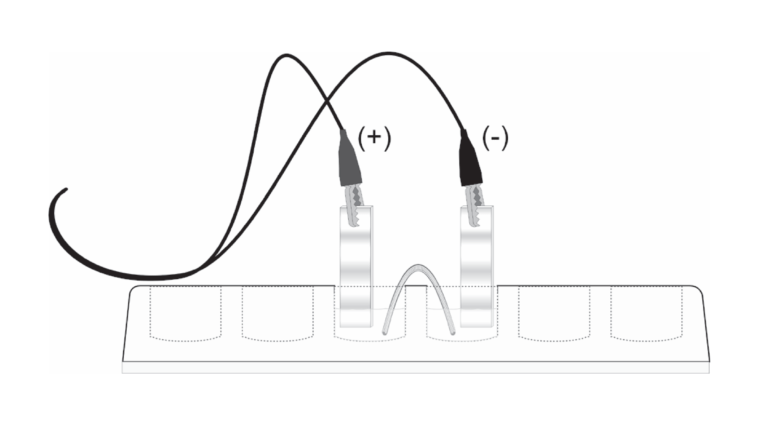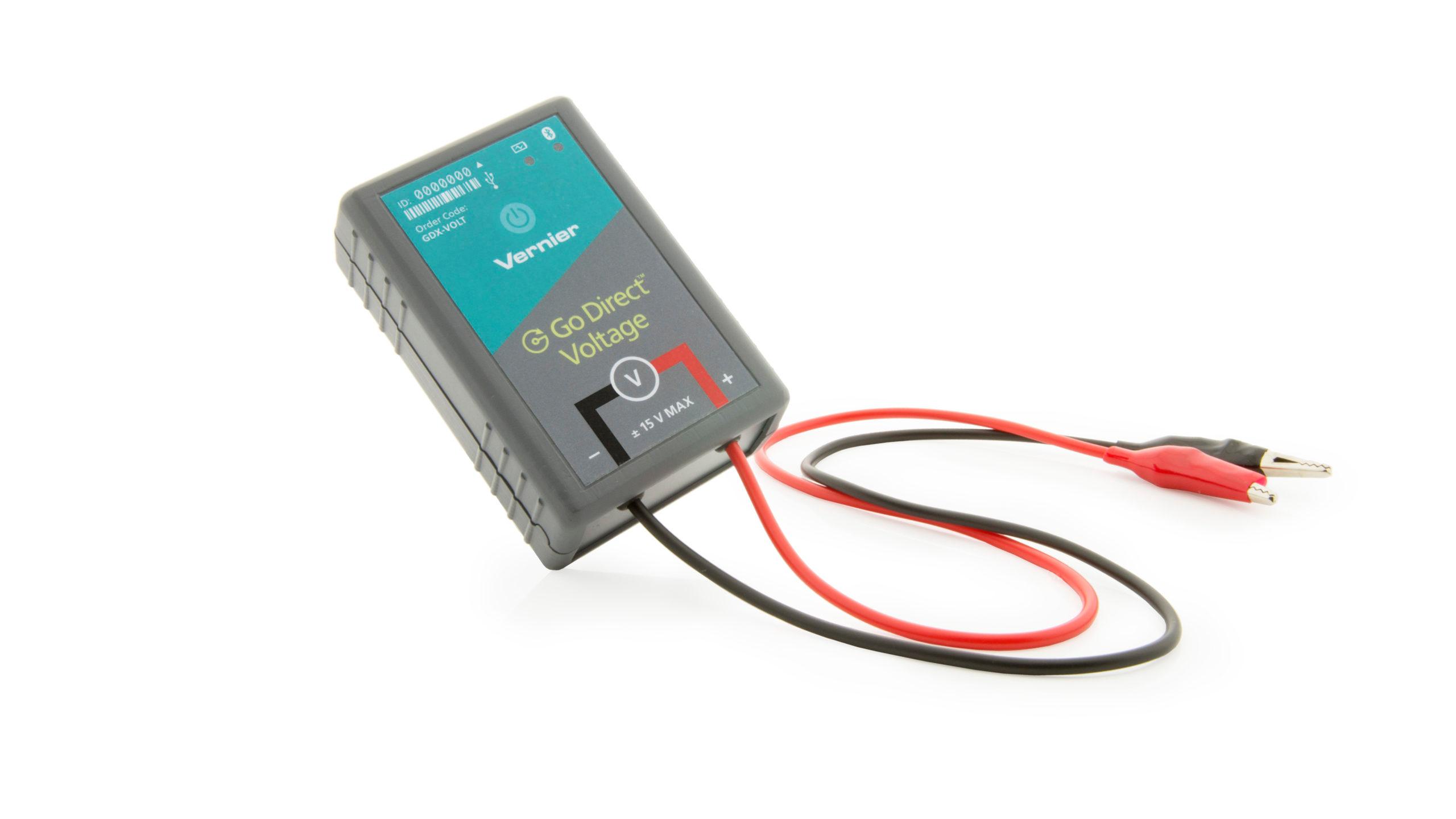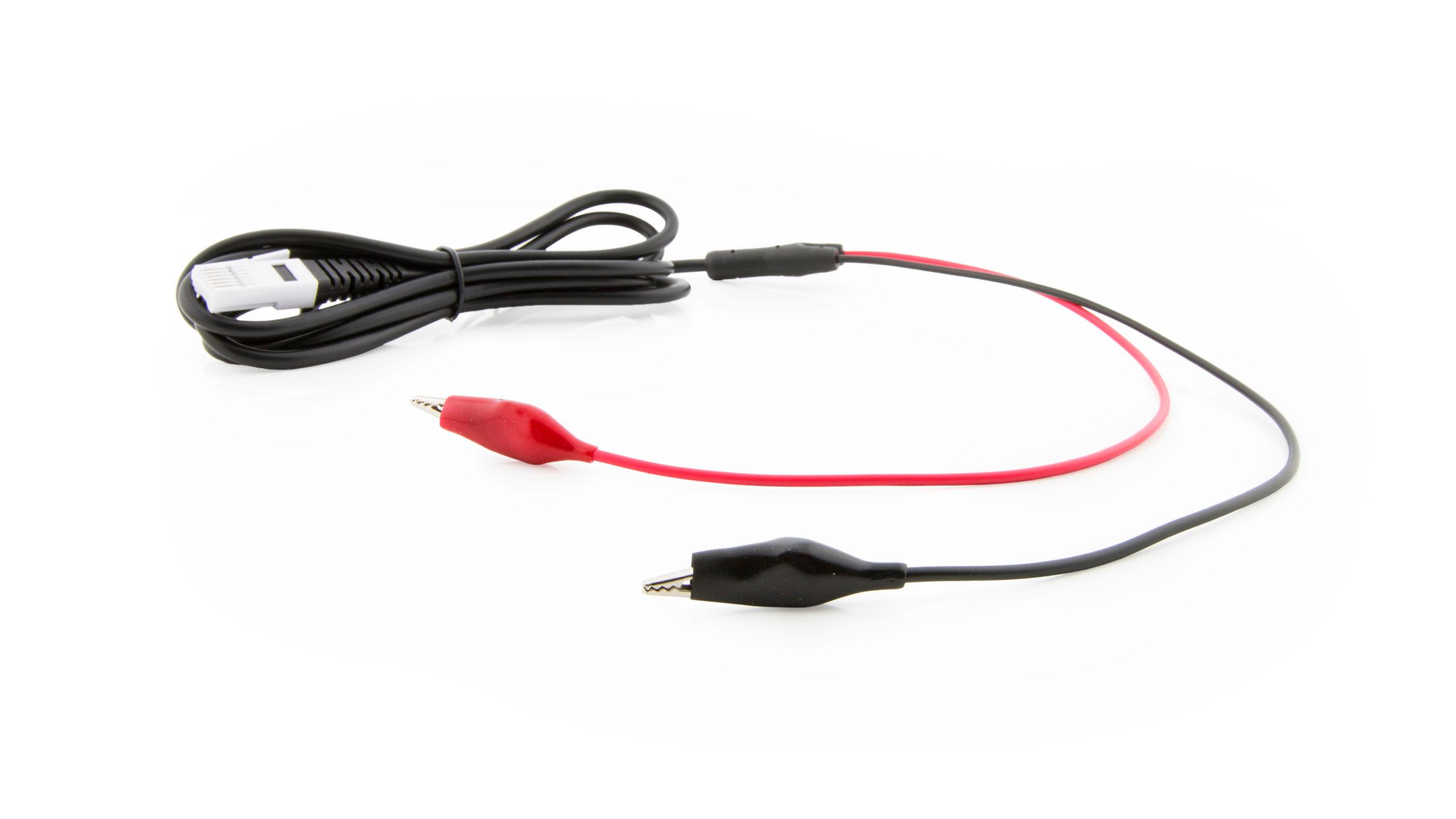
Introduction
In electrochemistry, a voltaic cell is a specially prepared system in which an oxidation-reduction reaction occurs spontaneously. This spontaneous reaction produces an easily measured electrical potential. Voltaic cells have a variety of uses.
In this experiment, you will prepare a variety of semi-microscale voltaic cells in a 24-well test plate. A voltaic cell is constructed by using two metal electrodes and solutions of their respective salts (the electrolyte component of the cell) with known molar concentrations. In Parts I and II of this experiment, you will use a Voltage Probe to measure the potential of a voltaic cell with copper and lead electrodes. You will then test two voltaic cells that have unknown metal electrodes and, through careful measurements of the cell potentials, identify the unknown metals. In Part III of the experiment, you will measure the potential of a special type of voltaic cell called a concentration cell. In the first concentration cell, you will observe how a voltaic cell can maintain a spontaneous redox reaction with identical copper metal electrodes, but different electrolyte concentrations. You will then measure the potential of a second concentration cell and use the Nernst equation to calculate the solubility product constant, Ksp, for lead iodide, PbI2.
Objectives
In this experiment, you will
- Prepare a Cu-Pb voltaic cell and measure its potential.
- Test two voltaic cells that use unknown metal electrodes and identify the metals.
- Prepare a copper concentration cell and measure its potential.
- Prepare a lead concentration cell and measure its potential.
- Use the Nernst equation to calculate the Ksp of PbI2.
Sensors and Equipment
This experiment features the following sensors and equipment. Additional equipment may be required.
Option 1

Option 2

Correlations
Teaching to an educational standard? This experiment supports the standards below.
- International Baccalaureate (IB) 2025/Chemistry
- Reactivity 3.2.6—A primary (voltaic) cell is an electrochemical cell that converts energy from spontaneous redox reactions to electrical energy.
Ready to Experiment?
Ask an Expert
Get answers to your questions about how to teach this experiment with our support team.
- Call toll-free: 888-837-6437
- Chat with Us
- Email support@vernier.com
Purchase the Lab Book
This experiment is #20 of Advanced Chemistry with Vernier. The experiment in the book includes student instructions as well as instructor information for set up, helpful hints, and sample graphs and data.

